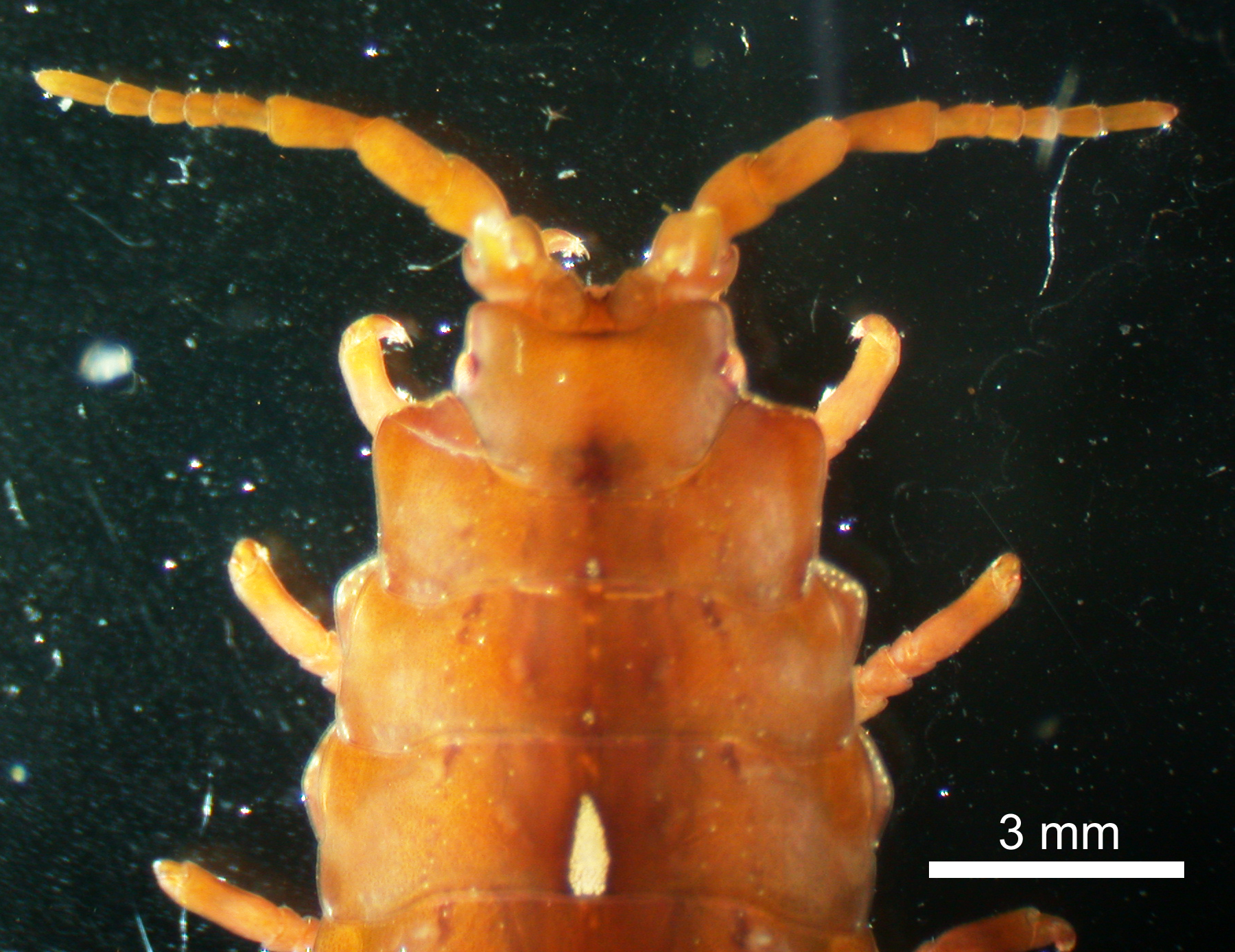A valviferan isopod was obtained intertidally in Oshoro Bay, Hokkaido, Japan, about 43°12′N, 140°51′E, on 21 May 2012 by Tomofumi Otake and Keisuke Kozima, photographed and identified by Hiroshi Kajihara as Cleantiella isopus (Miers, 1881), and fixed in 99% EtOH. DNA was extracted using the two legs of the body (Boom et al. 1990) with some modifications. Extracted DNA was dissolved in 30 µl of deionized water and has been preserved at –20°C. Remaining morphological voucher specimen has been deposited at the Hokkaido University Museum under the catalogue number ICHU22100069 (contact: Dr. Hiroshi Kajihara, kazi@mail.sci.hokudai.ac.jp).
An about 500-bp fragment of mitochondrial cytochrome c oxidase subunit I gene (COI) was amplified by polymerase chain reaction (PCR) using LCO1490 (5′-GGTCAACAAATCATAAAGATATTGG-3′) and HCO2198 (5′-TAAACTTCAGGGTGACCAAAAAATCA-3′) (Folmer et al. 1994). A hot start PCR was performed by a thermal cycler, DNA Engine, in a 20-µl reaction volume containing 1 µl of template total DNA (approximately 10–100 ng) and 19 µl of premix made with 632-µl deionized water, 80-µl Ex Taq Buffer (TaKara Bio), 64-µl dNTP (each 25 mM), 8-µl each primer (each 10 µM), and 0.1-µl TaKara Ex Taq (5 U/µl,TaKara Bio). Thermal cycling condition comprised an initial denaturation at 95°C for 30 sec; 30 cycles of denaturation at 95°C for 30 sec, annealing at 45°C for 30 sec, and elongation at 72°C for 45°C and a final elongation at 72°C for 7 min.
The PCR product was purified with the silica method (Boom et al. 1990). Both strands were sequenced with a BigDye® Terminator v3.1 Cycle Sequencing Kit (Applied Biosystems) following the manufacturer's protocol, using the same primer set as the initial PCR amplification. Sequencing was performed with ABI Prism 3730 DNA Analyzer (Applied Biosystems). Chromatogram and sequence data were operated with MEGA5.1 Beta2 software (Tamura et al. 2012).
Results
A 515-base partial COI sequence was determined from ICHU22100069, identified as Cleantiella isopus (Miers, 1881) (see Appendix).
Taxonomy
Class Malacostraca
Order Isopoda
Family Idoteidae Samouelle, 1819
Genus Cleantiella Richardson, 1912
Cleantiella isopus (Miers, 1881)
Japanese name: Iso-hera-mushi
(Figs 1, 2)

Fig. 1. Cleantis isopus (Miers, 1881), ICHU22100069, entire specimen.

Fig. 2. Cleantis isopus (Miers, 1881), ICHU22100069, magnification of head.
References
Boom, R., Sol, C. J. A., Salimans, M. M. M., Jansen, C. L., Wertheim-van Dillen, P. M. E., and van der Noordaa, J. 1990. Rapid and simple method for purification of nucleic acids. Journal of Clinical Microbiology 28: 495–503.
Folmer, O., Black, M., Hoeh, W., Lutz, R. and Vrijenhoek, R. 1994. DNA primers for amplification of mitochondrial cytochrome c oxidase subunit I from diverse metazoan invertebrates. Molecular Marine Biology and Biotechnology 3: 294–299.
Tamura, K.,D.,Peterson,N.,stecher,G., Nei, M. and Kumar, S. 2011. MEGA5.10: Molecullar Evolutionary Genetics Analysis (MEGA) software version 5.10 Molecular Phylogenetics and Evolution 28: 2731–2739.
Appendix
Partial COI sequence (515 bases) from ICHU22100069, identified as Cleantiella isopus (Miers, 1881).
TATTCGCACAGAGTTAGGGCATCCTGGGAGGTTTATTGGGGACGATCAAATTTATAATGTAATTGTTACAGCTCATGCATTTGTGATAATTTTCTTTATGGTAATACCTGTAATAATTGGGGGGTTCGGAAATTGGCTGGTACCTTTAATATTGGGGGCTCCAGATATAGCTTTTCCCCGGATAAATAATATAAGGTTTTGGCTCTTACCCCCCTCCTTAATATTGTTATTAAGGAGAGGGTTAGTGGAGAGAGGGGTGGGGACTGGGTGGACAGTCTACCCCCCATTGGCGGCTGGGGTGGCCCATAGAGGGGCTTCGGTGGATTTAGGGATTTTTTCATTACATCTAGCGGGGGCCTCTTCTATTTTAGGGGCTGTAAATTTCATTACAACTGTGATTAATATACGATCAGCTGGGATAAGGTTTGATCGAGTACCACTATTTGTTTGGTCGGTGTTTATTACTGCGATTCTTCTACTTTTATCTCTGCCTGTGCTTGCAGGGGCAATTACTA